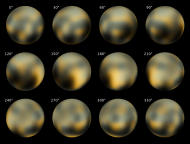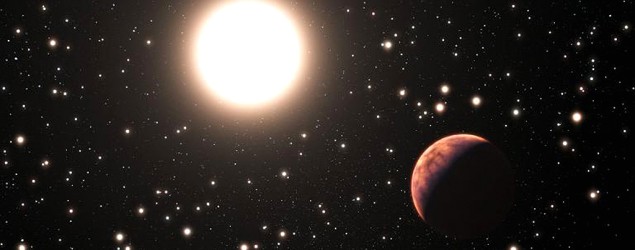

CAPE CANAVERAL, Fla. (AP) — It's showtime for Pluto.
NASA's New Horizons spacecraft has traveled 3 billion miles and is nearing the end of its nine-year journey to Pluto. Sunday, it begins photographing the mysterious, unexplored, icy world once deemed a planet.
The first pictures will reveal little more than bright dots — New Horizons is still more than 100 million miles from Pluto. But the images, taken against star fields, will help scientists gauge the remaining distance and keep the baby grand piano-sized robot on track for a July flyby.
It is humanity's first trip to Pluto, and scientists are eager to start exploring.
"New Horizons has been a mission of delayed gratification in many respects, and it's finally happening now," said project scientist Hal Weaver of Johns Hopkins University's Applied Physics Laboratory.
"It's going to be a sprint for the next seven months, basically, to the finish line," he said Friday. "We can't wait to turn Pluto into a real world, instead of just a little pixelated blob."
Launched from Cape Canaveral in January 2006 on a $700 million mission, New Horizons awoke from its last hibernation period early last month. Flight controllers have spent the past several weeks getting the spacecraft ready for the final but most important leg of its journey.
"We have been working on this project, some people, for over a quarter of their careers, to make this mission happen," said project manager Glen Fountain of the Applied Physics Lab, "and now we're about to hit the mother lode."
The spacecraft's long-range reconnaissance imager will take hundreds of pictures of Pluto over the coming months. It snapped pictures last summer, before going into hibernation, but these new ones should be considerably brighter. It will be a few days before the new images are beamed back to Earth; scientists expect to release them publicly in early February.
By May, New Horizons' photos should equal and then surpass the ones taken by the Hubble Space Telescope, with pictures of the plutoid and its moons improving with each passing day.
The real payoff will come when New Horizons flies by Pluto on July 14 at a distance of 7,700 miles and speed of nearly 31,000 mph. It will whip past Charon, Pluto's largest moon, from 18,000 miles out.
Scientists have no idea, really, what Pluto looks like way out in the Kuiper Belt beyond Neptune's orbit, home to little icy objects galore.
Pluto is the biggest object in the Kuiper Belt. Together with mega-moon, Charon, roughly half Pluto's size, the two orbs could fit inside the United States with room to spare. Five moons have been found so far around Pluto. More could be lurking out there, awaiting discovery by New Horizons.
The Applied Physics Lab in Laurel, Maryland, designed and built New Horizons, and is now managing the mission for NASA.
Pluto was still officially a planet, No. 9 in the solar system lineup, when New Horizons departed Earth. It was the only planet in our solar system yet to be explored. But seven months later, the International Astronomical Union stripped Pluto of its planethood, classifying it instead as a dwarf planet. Later came the term, plutoid.
Some scientists are hoping Pluto's upcoming close-up — and expected cosmic buzz — may prompt the group to reverse its decision. The nature of science, after all, is fluid, as even the astronomical union maintains.
Streator, Illinois, — hometown of Pluto's discoverer, the late astronomer Clyde Tombaugh — already has declared 2015 the "Year of Pluto." Tombaugh spotted Pluto in 1930.
New Horizons may, indeed, "turn the tide in some people's opinions into the other camp," Weaver said. "But that's not really so important."
More important, he said, is finding out "what does Pluto really look like."
___
Online:
Johns Hopkins University: http://pluto.jhuapl.edu/
International Astronomical Union: http://www.iau.org/
